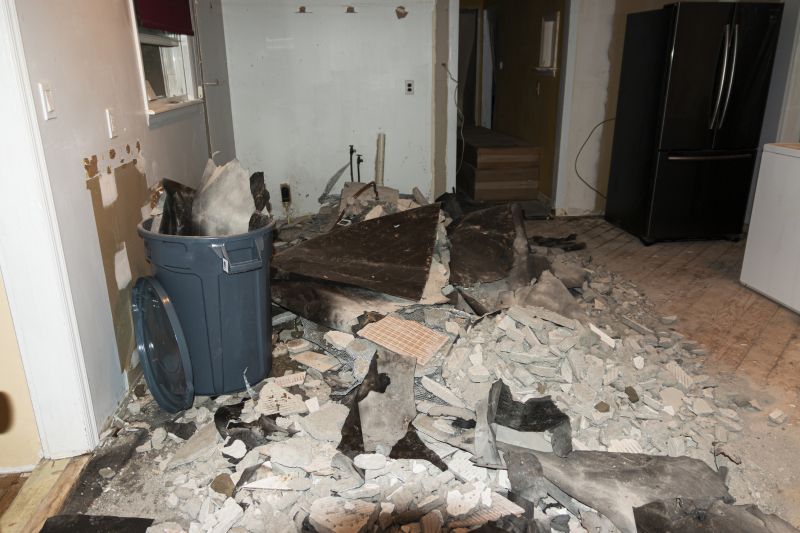Favorite Fire Restoration Tools For Effective Cleanup
Choose from trusted products designed to remove soot, smoke, and damage for a safer, cleaner restoration process.
 Fire restoration products are essential tools and materials used to effectively address the aftermath of fire damage in residential, commercial, and industrial settings. These products help mitigate further deterioration, remove soot and smoke residues, and restore surfaces to their pre-fire condition. From cleaning agents to specialized equipment, a comprehensive approach involves selecting the right combination of products tailored to the specific needs of each restoration project.
Fire restoration products are essential tools and materials used to effectively address the aftermath of fire damage in residential, commercial, and industrial settings. These products help mitigate further deterioration, remove soot and smoke residues, and restore surfaces to their pre-fire condition. From cleaning agents to specialized equipment, a comprehensive approach involves selecting the right combination of products tailored to the specific needs of each restoration project.
Top Overall Option
Multi-Purpose Fire Damage Restoration Kit
A versatile kit containing a variety of cleaning agents, odor neutralizers, protective gear, and surface repair materials designed to address common fire damage scenarios. Ideal for professionals and experienced DIYers looking for a comprehensive solution to fire restoration tasks.
Types of Products For Fire Restorations
Soot and Smoke Cleaning Solutions
Chemical agents formulated to effectively remove soot and smoke residues from various surfaces, including walls, ceilings, and furniture.
Odor Neutralizers and Eliminators
Products designed to eradicate persistent smoke odors using ozone, thermal fogging, or enzyme-based technologies.
Fire-Resistant Drywall and Panels
Specialized wall materials that resist fire spread and provide added safety during restoration.
Surface Sealants and Coatings
Protective coatings that seal surfaces and prevent future damage or soot adhesion.
Air Purifiers and HEPA Filtration Systems
Equipment used to improve indoor air quality by removing airborne soot, ash, and other particulates.
Fire-Resistant Insulation Materials
Insulation products designed to withstand high temperatures and prevent fire spread within structures.
Heavy Duty Cleaning Tools
Brushes, scrubbers, and pressure washers suitable for removing stubborn soot and residues.
Protective Clothing and Gear
Personal protective equipment including masks, gloves, and coveralls for safe handling of hazardous materials.
Structural Repair Materials
Reinforcing materials like fire-rated plywood, beams, and adhesives for rebuilding efforts.
Thermal Imaging Cameras
Devices used to detect hidden hotspots and assess the extent of heat damage in structures.
Popular Choices
Convenient spray solutions for quick soot and smoke stain removal on various surfaces.
Devices used to neutralize smoke odors by generating ozone gas in enclosed spaces.
Powerful cleaning agents effective against greasy soot residues.
Specialized paints that provide a protective layer against heat and flames.
High-efficiency particulate air vacuum cleaners for removing airborne soot and ash.
Equipment used to disperse deodorizing agents deeply into affected areas.
Sealants designed to block smoke and heat transfer through surfaces.
Materials used to strengthen and repair fire-damaged structural elements.
Masks designed to filter out hazardous soot particles during cleanup.
Pre-moistened wipes suitable for quick soot and smoke residue cleanup.
The process of fire restoration often begins with thorough assessment and safety precautions. Once the affected areas are identified, cleaning solutions designed to break down soot and smoke deposits are employed. These solutions vary in formulation, with some being solvent-based for heavy residues and others being enzyme or bio-based for delicate surfaces. In addition, odor removal products play a crucial role in eliminating persistent smoke smells, often utilizing ozone generators or thermal fogging techniques.
Structural repairs and surface refinishing are also vital components of fire restoration. Products such as fire-resistant drywall, sealants, and protective coatings help reinforce and restore damaged structures. Equipment like air scrubbers and HEPA filtration systems are used continuously to improve indoor air quality during the process. Proper use of these products ensures safety, efficiency, and the best possible outcome for property owners seeking to recover from fire incidents.
Overall, selecting the appropriate products for fire restoration requires careful consideration of the extent of damage, the types of surfaces involved, and safety requirements. Professionals often rely on a combination of chemical solutions, cleaning tools, protective gear, and structural repair materials to ensure a comprehensive restoration process. Proper training and adherence to safety standards are essential when handling these specialized products to achieve effective and safe results.
Key Buying Considerations
- Extent of fire and smoke damage to determine the level of cleaning required.
- Type of surfaces affected, including whether they are porous or non-porous.
- Compatibility of cleaning products with the materials involved.
- Safety features of equipment, such as filtration systems and protective gear.
- Ease of use and application methods for various products.
- Odor elimination effectiveness and whether specialized products are needed.
- Durability and fire resistance of repair materials and coatings.
- Environmental safety and VOC content of chemical products.
- Availability of replacement parts and ongoing support for equipment.
- Cost-effectiveness and overall value in relation to project scope.
- Compliance with local safety standards and regulations.
- Training requirements for proper handling and application.
- Storage considerations for chemical and equipment safety.
- Potential need for professional consultation or certification.
- Customer reviews and product reputation for reliability.
